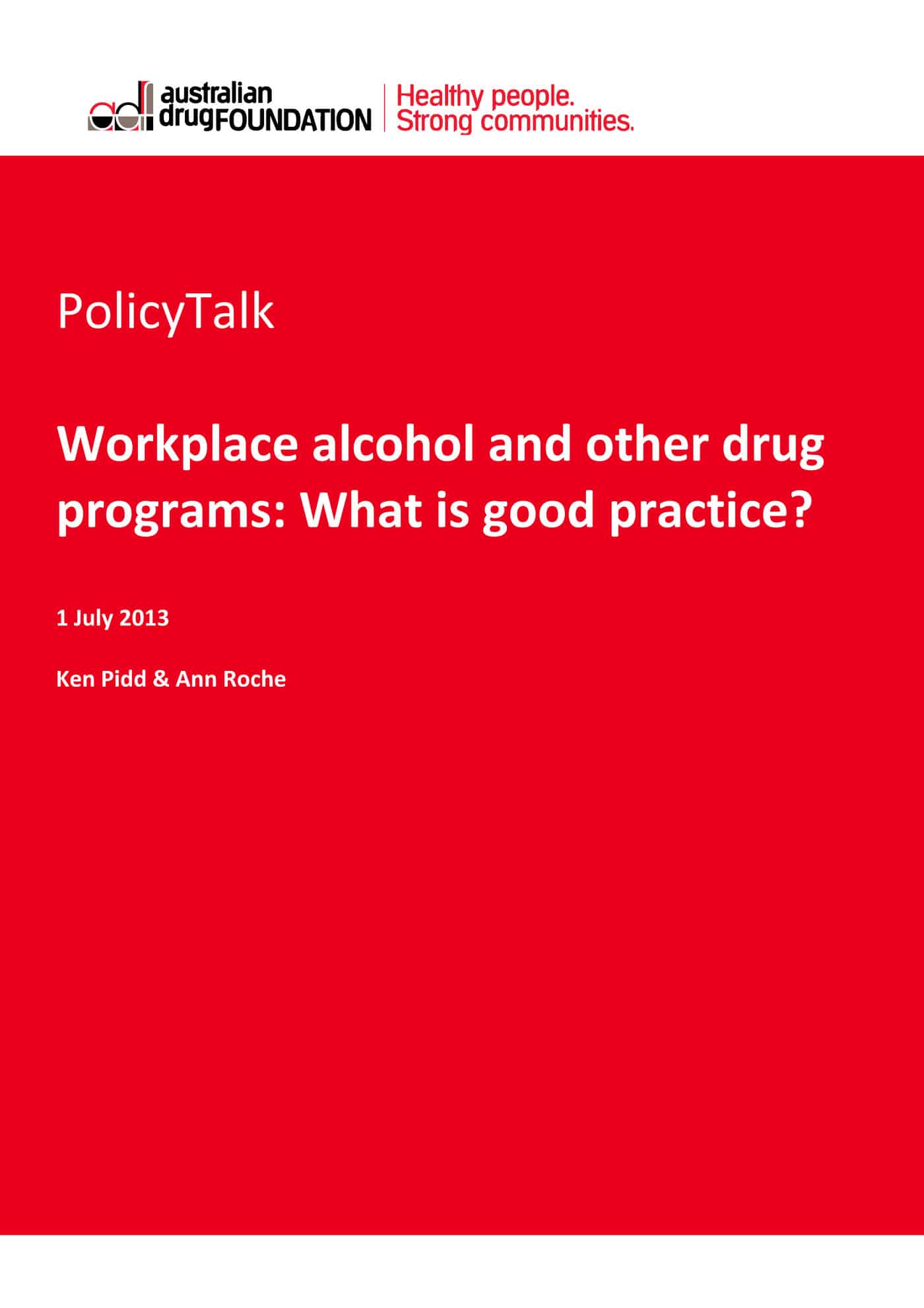 On 12 July 2013 the Australian Drug Foundation reported that alcohol use is responsible for:
On 12 July 2013 the Australian Drug Foundation reported that alcohol use is responsible for:
- five per cent of all Australian workplace deaths, and
- up to 11 per cent of non-fatal injuries.
These figures should be of great concern to everyone but what if these figures generate no concern and no outrage, and no change?
The significance of the research data above and in the full document – Workplace alcohol and other drug programs: What is good practice? – is not in the research but in the potential responses to the research.
In the next few weeks there should be statements of support and action plans from governments, major companies, safety professional associations, unions and business advocates. This is unlikely because the solution will be too difficult to apply in isolation and the coordinated approach is too threatening to the status quo.
The conclusion of the report above says
“Good practice responses to alcohol and drug related harm in the workplace are effective because they are tailored to suit the specific conditions, needs and resources of individual workplaces and adopt a adopt a multifaceted whole of workplace approach that aims to create a workplace culture that minimises risk of alcohol and drug related harm.” (page 8, and yes I can’t work out the double adopt typo either)
The establishment of a multifaceted approach to changing a workplace culture is unlikely in the current political climate where red tape is the enemy and supporting the nanny state is the eighth deadly sin.
The “good practice responses” in this report are mostly valid and not all responses will be needed by, or effective in, all workplaces. For instance, on workplace drug testing, the authors, Ken Pidd and Ann Roche, write:
“Testing may be a useful tool in responding to workplace alcohol and drug related harm, but it needs to be incorporated into a much broader ‘whole-of-workplace’ response that targets the workplace culture.” (page 7)
The “whole-of-workplace” concept requires an enormous amount of work and clarification and, later, political and corporate commitment. At the moment, without a strategy for achieving such an approach, this type of recommendation is fantasy.
That is why the response to this policy document is more important than the report itself. Someone needs to take these findings and the suggested responses into a real world situation and prove that such interventions are achievable and actually work. Theories without support from the professions and cultural and political influencers will fail and be seen as just another missed opportunity. Workplace safety has seen too many missed opportunities.
